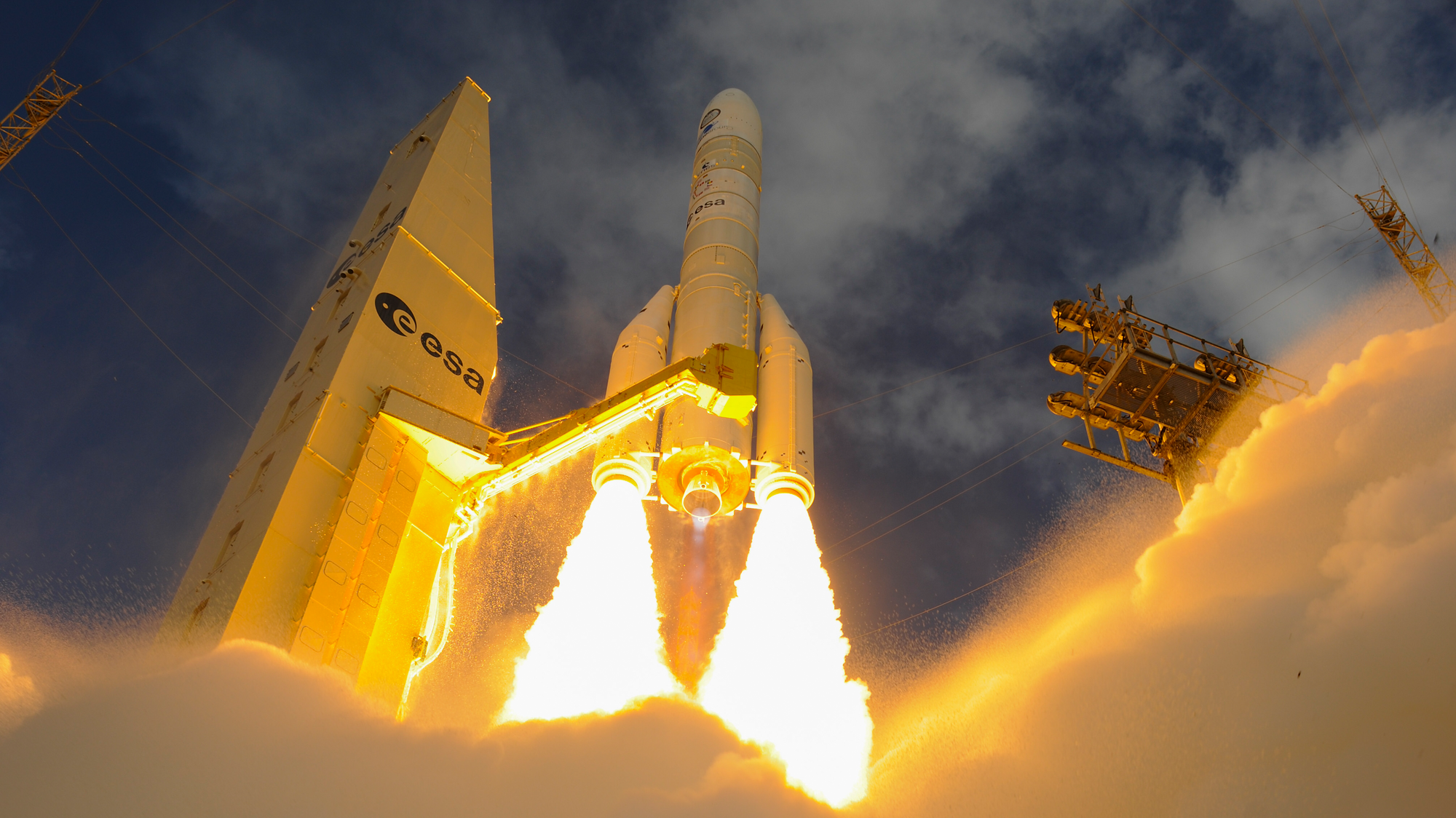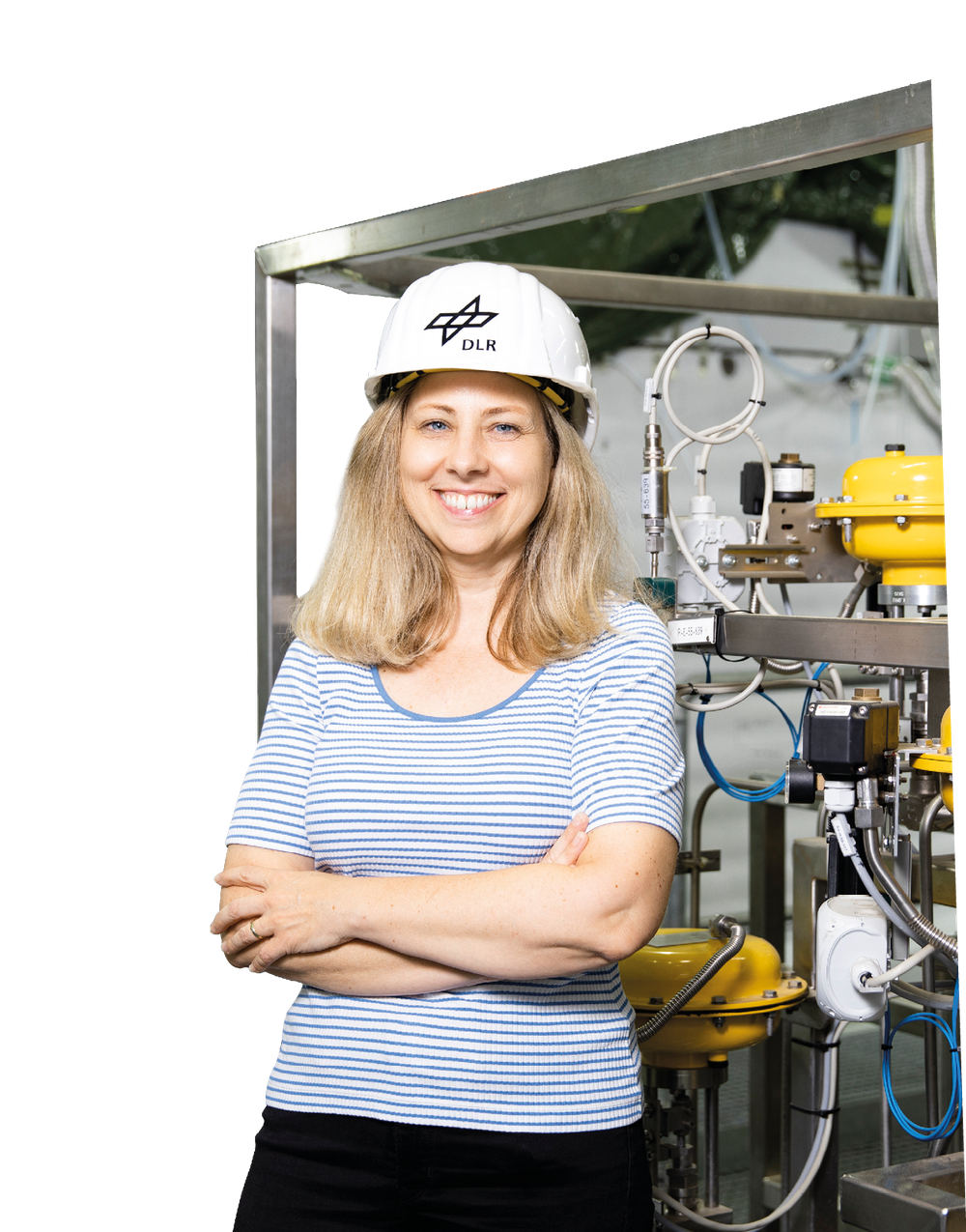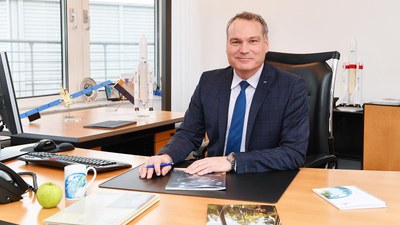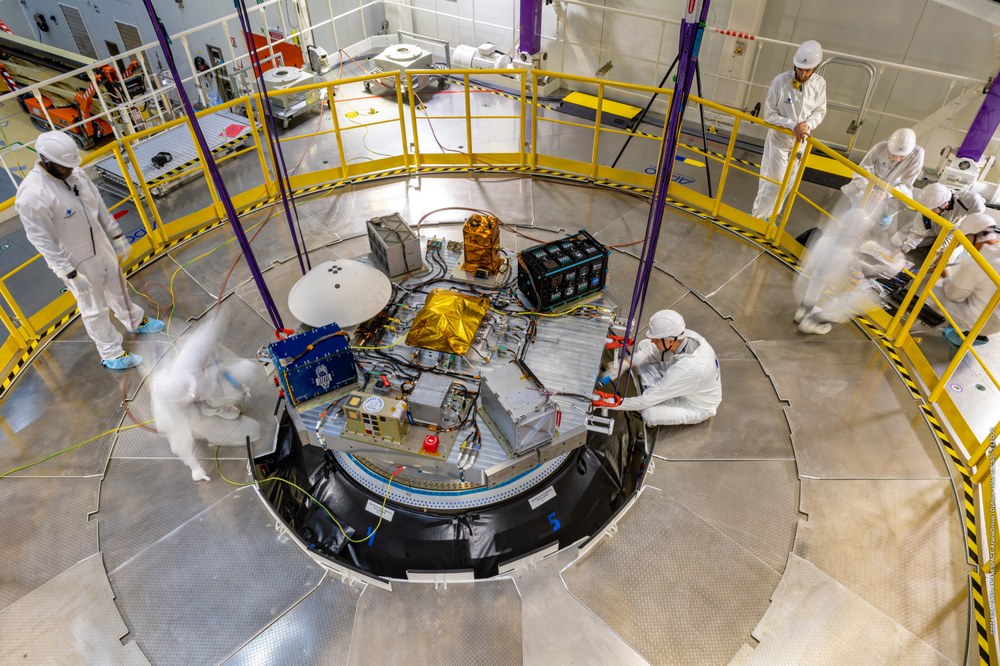Per aspera ad astra

ESA/S.Corvaja
A new chapter in European space exploration began on 9 July 2024, at precisely 21:00 CEST. The powerful Vulcain 2.1 engine roared to life, and with a flawless launch from Kourou – Europe's Spaceport in French Guiana – the Ariane 6 rocket embarked on its inaugural flight. "Go, go, go!" Like thousands watching around the world, Anja Frank sat mesmerised before the screen. But for her, it was more than just another rocket launch – it was the launch of her rocket. As the head of the Test Facilities department at the DLR Institute of Space Propulsion in Lampoldshausen, Anja oversees the execution, monitoring and control of the rocket tests carried out there. She shared in the excitement of every crucial step of the launch: the lift-off with the first stage, the ignition of the upper stage, and its second ignition in space. Despite being the rocket's first flight, she had experienced it all before – not at a launch site or in front of a computer, but at a rather unusual place in the vicinity of Stuttgart …

The DLR site in Lampoldshausen is nestled in an idyllic setting, surrounded by wooded hills, fields and small river valleys. Birds chirp and hares hop leisurely across the meadows. It is truly a small natural paradise, as it seems. But then, all of a sudden, the silence is broken. A loud warning signal sounds ten times, followed by a loud roar. A deep rumble fills the air as thick clouds of water vapour rise into the sky. When large rocket engines or stages are tested at Lampoldshausen, it does not go unnoticed in the entire perimeter..
Setting the stage for a future-proof launch vehicle
Some ten years ago, in December 2014, the goal of developing a successor to the highly successful Ariane 5 launcher was set at the ESA Council Meeting at Ministerial Level in Luxembourg. The decade that followed saw requirements and concepts drafted, discarded and reimagined, and a great deal of change in both the launcher sector and the global political landscape. Numerous reasons led to the decision to develop Ariane 6, including improving cost efficiency, achieving independence from Russian Soyuz launchers and providing significantly more flexible rocket stages to launch new types of missions, such as satellite constellations. The goal was none other than to ensure that European launchers would be fit for the future.
"The primary objective of the European launcher programme has always been to guarantee Europe's independence in space. In light of recent global political developments, this is now more important than ever," explains Walther Pelzer, DLR Executive Board Member and Director General of the German Space Agency at DLR. "With the completion of the new Ariane 6, we have secured our autonomy for the future."
A long and winding road
But the road to space was not as smooth as anticipated. Originally scheduled for 2020, the first Ariane 6 launch was delayed by four years. "Looking back, we can say the initial timeline was very optimistic," says Denis Regenbrecht, Ariane 6 Programme Manager at the German Space Agency at DLR in Bonn. "The organisational, planning and technical challenges involved in developing a project of this magnitude are immense, so the risk of delays in such undertakings is particularly high." The additional costs for the development and construction of the flight segment are largely borne by the space industry itself, while only the higher costs associated with the ground segment are covered by participating states in the Ariane programme.
Add to this that construction work at the launch site in Kourou was significantly impacted by the Coronavirus pandemic, with development and production activities across Europe also affected. "We are now pleased that all of these hurdles have been overcome and Ariane 6 is ready for the European payload market. Per aspera ad astra – through hardship to the stars, as the saying goes," adds Regenbrecht.
Revolutionising payload flexibility
Ariane 6 will be available in two versions. The larger Ariane 64, with lift from four solid-fuel boosters, will take over many of Ariane 5's tasks, including dual launches and the transport of large institutional payloads. Ariane 62, with two boosters, will primarily launch smaller payloads from institutional European customers such as the European Space Agency (ESA) and the European Union, notably the satellites of the Copernicus Earth Observation constellation and the European Galileo navigation system.
Ariane 6 not only offers greater flexibility than its predecessor in terms of its payload capacity, but also a broader range of applications. This is thanks to the Vinci upper-stage engine, which can be re-ignited multiple times. This capability means a single launch can deploy multiple satellites at different locations in space, a key requirement for mega-constellations – swarms of satellites flying in formation, aligned like a string of pearls.
The new concept has been well received by the market, with all launches through to 2027 'sold out'. This is largely driven by a contract with the commercial customer Amazon, which plans to launch 18 Ariane 6 with up to 40 satellites for its Kuiper constellation. The new technology that makes up Europe's new rocket also holds significant future potential, as its ability to re-ignite and navigate complex orbits is essential, for example, for missions to the Moon or Mars.

ESA/D. Ductros
About the Ariane 6 programme
Germany's involvement in the European Space Agency's Ariane 6 programme is overseen by the German Space Agency at DLR. As prime contractor, ArianeGroup is responsible for the development and construction of the entire launch vehicle, working in collaboration with various industrial partners. At the DLR site in Lampoldshausen, engine and upper stage tests are conducted on behalf of ArianeGroup and its partners. Arianespace, a subsidiary of ArianeGroup, handles the marketing of the launcher system. The French space agency CNES is responsible for the construction of the launch site in Kourou and oversees tests carried out there.
Spaceflight 'Made in Lampoldshausen'
"From the first tests of the Vinci and Vulcain engines to their further development and the qualification of the entire upper stage, the DLR site in Lampoldshausen played a crucial role in the development of the Ariane 6 propulsion system – every step of the way," says Anke Pagels-Kerp, DLR Divisional Board Member for Space. "This is due not only to the site's test stands and infrastructure, which are the only ones of their kind in Europe, but also thanks to its close cooperation with research and the expertise of our specialists."
The Vinci engine, originally developed for Ariane 5, was tested and qualified on DLR's P4.1 test stand. Altitude simulation tests, which are only possible at the Lampoldshausen site, were also performed there. This involves testing the engine in a vacuum – that is, under the conditions that the technology is exposed to at high altitudes. These have an impact on the functioning of the rocket motor, such as ignition behaviour and thermal balance.

ESA/Stephane Corvaja
Vinci was modified for Ariane 6. The upgraded upper-stage engine can now be re-ignited up to four times, with a total burn time of up to 14 minutes. Like the Vulcain 2.1 engine, Vinci is cryogenic, meaning it runs on liquid hydrogen and liquid oxygen. During test campaigns, rocket flight conditions were simulated as accurately as possible. The test stand replicated the functions of the rocket stage, not only igniting the engine but also simulating all processes before, during and after a flight. The engine was fuelled by tanks on the test stand, supplied by pressurised gas and regulated in such a way that flight conditions were realistically simulated for the engine. This allowed engineers to confirm, for the first time, that all components were perfectly connected and all systems functioned smoothly.

The primary objective of the European launcher programme has always been to guarantee Europe's independence in pace. In light of recent global political developments, this is now more important than ever. With the completion of the new Ariane 6, we have secured our autonomy for the future.

Fire and ice – hot-fire tests put the rocket through its paces
"The biggest challenge was testing the entire upper stage as a system, which is incredibly complex," says Anja Frank. "For the first time, the whole stage, including integrated avionics – the electronic flight control system – was also tested. We allowed the stage to operate independently with its own systems." What Frank describes so casually is the rocket stage undergoing all the steps in a regular flight into space – while remaining on the ground, safely under control at the test stand. The forces acting on all of the components were immense, causing every part to shake and vibrate.
Each upper-stage test day, conducted between October 2022 and April 2024, lasted up to 24 hours. During this time, the materials and test bench were subjected to extreme stresses; the cryogenic liquid hydrogen was kept at minus 253 degrees Celsius, while the engine exhaust gases reach around 3000 degrees Celsius. Water vapour was channelled outside through a massive duct, where some of the cooled water was collected in a specialised basin and reused for cooling. The Ariane 6 upper stage tests were carried out on DLR's P5.2 test stand, which was specially developed and constructed for this purpose on behalf of ESA.

Airbus Safran Launchers

ESA
Astris, PHOEBUS and Prometheus – the path to the future
Following the successful launch of Ariane 6, it is time to look to the future as the European launcher programme continues to evolve. To remain competitive, it must be constantly improved and adapted to new challenges. A key focus of ESA's current programme to enhance performance is, for example, increasing propulsion power, particularly as payloads grow in size. Greater thrust is also essential for future exploration missions, such as those to the Moon or Mars. The upcoming Astris kick stage will play a crucial role here, enabling complex orbital manoeuvres.
In parallel, the PHOEBUS (Prototype for a Highly OptimisEd Black Upper Stage) and Prometheus technology development projects are exploring innovative approaches in propulsion. Both are part of ESA's Future Launchers Preparatory Programme, aimed at preparing the next generation of launch vehicles. PHOEBUS introduces a new upper stage concept built with carbon fibre composite materials. The main intention with this carbon technology is to reduce weight, which can lower launch costs or increase payload capacity. Additionally, the use of this composite material increases design flexibility, allowing engineers to create elaborate shapes with fewer parts and less reliance on traditional manufacturing processes like welding, turning or milling.
Meanwhile, the Prometheus programme, developed by ESA and CNES, is working on Europe's first main stage engine powered by a mix of liquid oxygen and liquid methane. The engine should be cost-effective, flexible and reusable, and is set to power the next generation of European launch vehicles from 2030.
Whether it is Astris, PHOEBUS or Prometheus, all propulsion technologies are being tested at the DLR site in Lampoldshausen. Not only is the Astris kick stage engine currently being tested there, but from 2025 the entire Astris system will also be evaluated, as will the PHOEBUS stage. Meanwhile, the P5 test stand has already been equipped with an additional methane tank and will soon be ready for the tests with Prometheus, scheduled to begin in 2025. "When it comes to the future of European space exploration, there is no getting around us," says Anja Frank with a confident smile.
An article by Diana Gonzalez y Velden from the DLRmagazine 176

